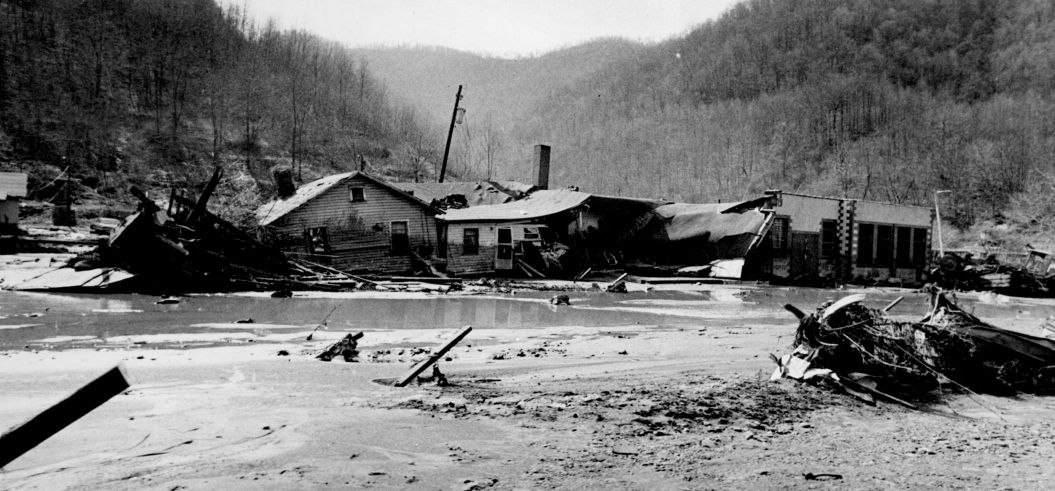The Buffalo Creek mineral waste facility failure, 1972
The Buffalo Creek flood was an accident that occurred on 26th February 1972 when coal slurry impoundment dam 3 built on a hillside in Logan County, West Virginia (USA), by the Pittston Coal Company collapsed.
In the days preceding February 26th, rain fell almost continuously, although experts later claimed this was typical for late winter weather in the area. Buffalo Mining officials, concerned about the condition of the highest dam, measured water levels every two hours the night of the 25th.
Although a Pittston official in the area was alerted to the increasing danger, the residents of the hollow were not informed. The company sent away two deputy sheriffs, who had been dispatched to assist with potential evacuations. Despite the lack of warning from company officials, some residents sensed the danger and moved to higher ground.
Just prior to 8:00 a.m. on February 26th, operator D. Gibson discovered the water had risen to the crest of the impoundment and the dam was “real soggy”.
At 8:05 a.m., the dam collapsed.
The resulting flood obliterated the other two impoundments and unleashed approximately 500 million litres (132 million gallons) of black waste water upon the residents of 16 coal mining communities in Buffalo Creek Hollow.
Out of a population of 5500 people, 125 people were killed, 1121 were injured, and over 4000 were left homeless. The incident completely levelled the town of Saunders in West Virginia (the current town of Saunders is not the same one that once was located in Buffalo Creek).
625 adult survivors sued the Pittston Coal Company, seeking $ 32,000,000 in damages, but settled in June 1974 for $ 13,500,000. A second suit was filed by 348 child survivors, who sought $ 225,000,000, but settled for $ 4,800,000 in June 1974. The state of West Virginia also sued the company for $ 100,000,000 for disaster and relief damages, but Governor Arch A. Moore, Jr. settled for just $ 1,000,000 three days before leaving office in 1977.
Attorney Gerald M. Stern wrote a book entitled The Buffalo Creek Disaster about his experiences in representing the victims of the flood. The book includes descriptions of his experience dealing with the political and legal environment of West Virginia, where the influence of large coal mining corporations is significant. Sociologist Kai T. Erikson wrote a study on the effects of the disaster on the Buffalo Creek community entitled “Everything In Its Path”.
Links:
http://www.wvculture.org/hiStory/buffcreek/bctitle.html http://en.wikipedia.org/wiki/Buffalo_Creek_Flood

